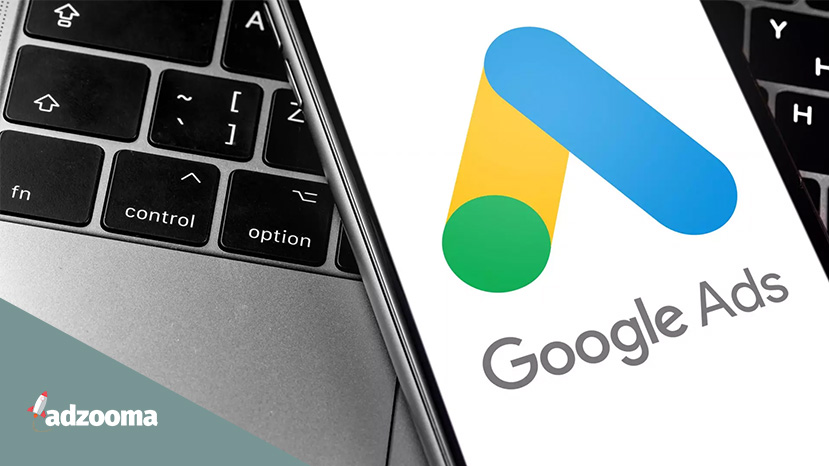Formerly known as Google Adwords, Google Ads is an online advertising platform designed to help businesses reach new customers. It uses a pay-per-click advertising method, which means you only pay when someone clicks on your ad.
Google Ads is great if you are looking to drive more traffic, increase your brand awareness and boost your sales. People use Google to search for products and services every single day, and they are more likely to choose you over your competitors if your ad shows up higher on the results page.
It’s important to choose the ad type that best fits your brand – for instance, if you’re looking to advertise your online inventory, then Shopping ads will be the most suitable fit for your business and it will help you to reach your goals. There are five types of ads to choose from:
- Search Network Campaign
- Display Network Campaign
- Shopping Campaign
- Video Campaign
- App Campaign
To help you make the most out of Google Ads, I’ve put together a step-by-step guide on how to set up your Google Ads account and the three top tips to improve your campaigns. Let’s get started.
Why should you advertise on Google?
Google dominates the search engine market with over 72% of internet users worldwide conducting 3.5 billion searches every single day and, if your ad ranks first, it will get an average click-through-rate of 7%. This is a huge difference compared to the average CTR for all positions which averages around 1.55%.
There are loads of advantages of running ads on Google. A few benefits include:
- It can help increase your ROI
- It will bring you high-quality traffic sources
- You are able to target your ads specifically
- You can easily manage your campaigns in one place
Google Ads can also work for almost any advertising budget. You set your monthly budget cap and never go over it, and you can pause or adjust your spend anytime. Better yet, It’s said that for every $1 spent on Google Ads, the average business generates $2 in revenue.
How to set up your Google Ads account
Setting up Google Ads isn’t as hard as you might think. It’s as simple as this:
- Head over to Google Ads and click ‘Start now’.
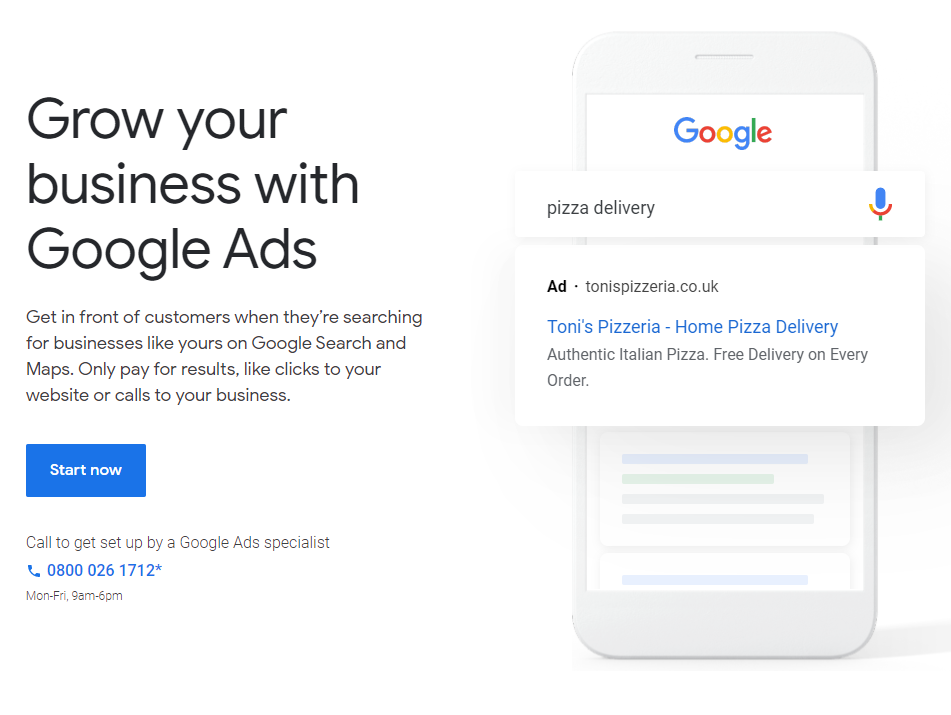
- Create an account – use your email address to create an account, or sign in with an existing Google account.
- Choose your main advertising goal.
It’s important to select the right goal at the start of your campaign so Google knows what you are trying to achieve. Whether that be growing your online sales, getting more customers through the door or increasing your phone enquiries.
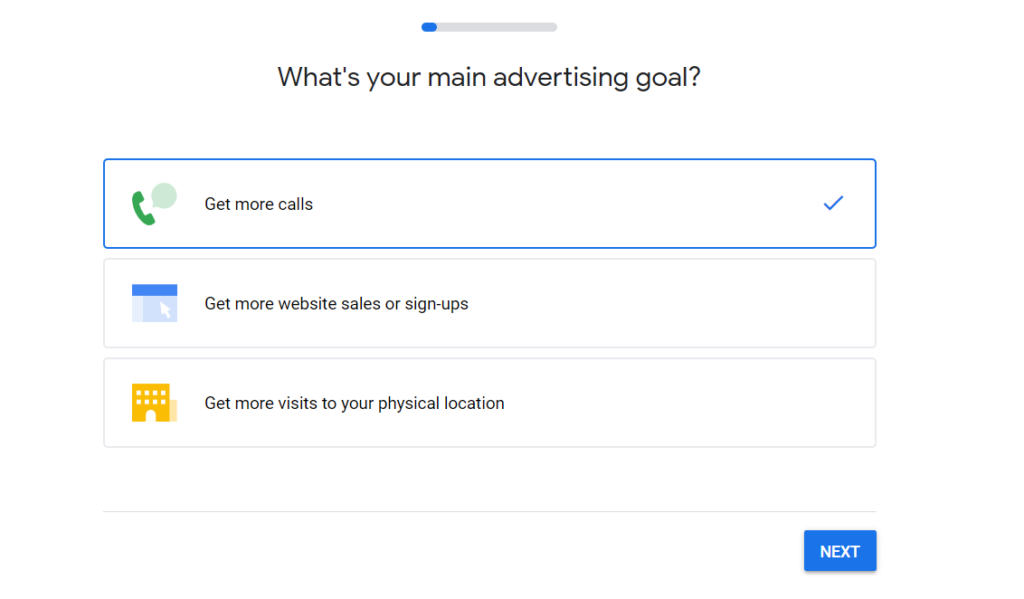
- Insert your business name.
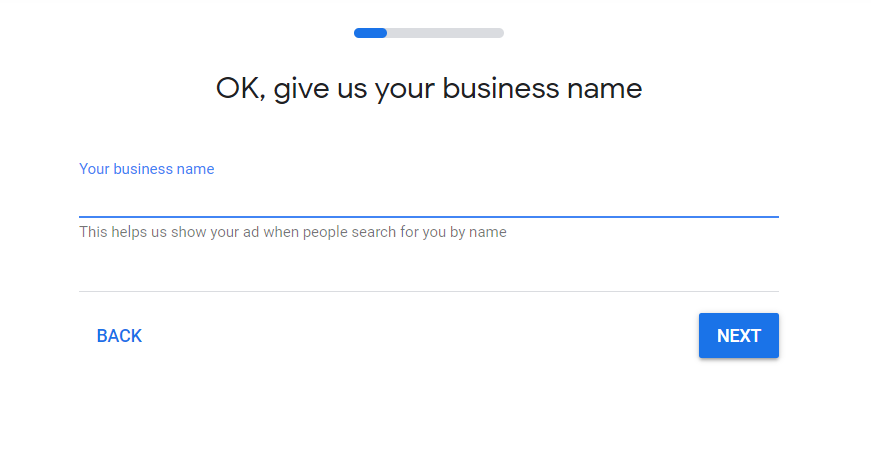
- Tell Google where you want them to send visitors when they click your ad.
This could be your homepage, or to a specific landing page on your website such as to your pricing page, or to a particular product. Learn more about creating landing pages here.
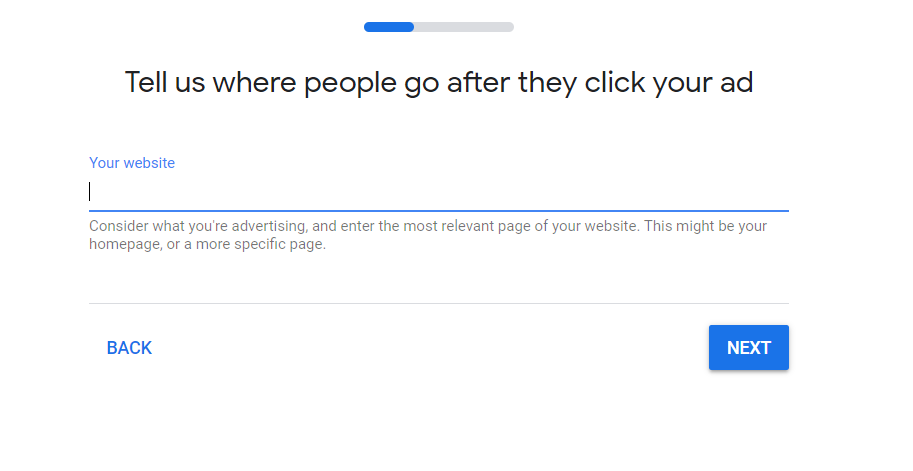
- Google will then show you what your landing page will look like for customers when they click on your ad from a desktop or mobile device.
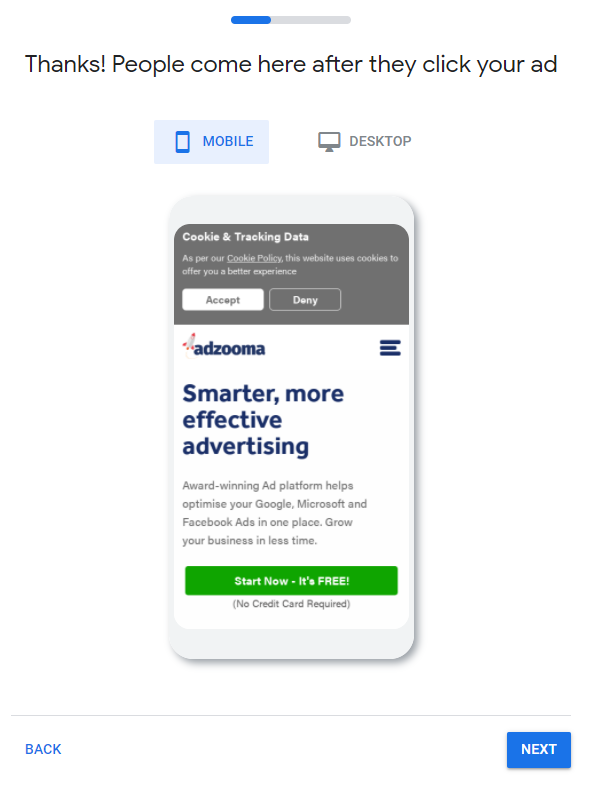
- Write engaging copy for your advert focusing on the benefits of your business.
When you’re writing your ad, a few things to consider include:
- Make the most of your character count – each ad consists of three headlines containing a maximum of 30 characters and two descriptions containing 90 characters.
- Focus on the benefits of your business rather than the features. People want to know how your product or service will help them.
- Always include at least one call to action (CTA) – this could be as simple as ‘Sign up now’ or ‘Call our team’. The best CTA phrases are specific, clear and create urgency. Here’s a few tips to help you along the way.
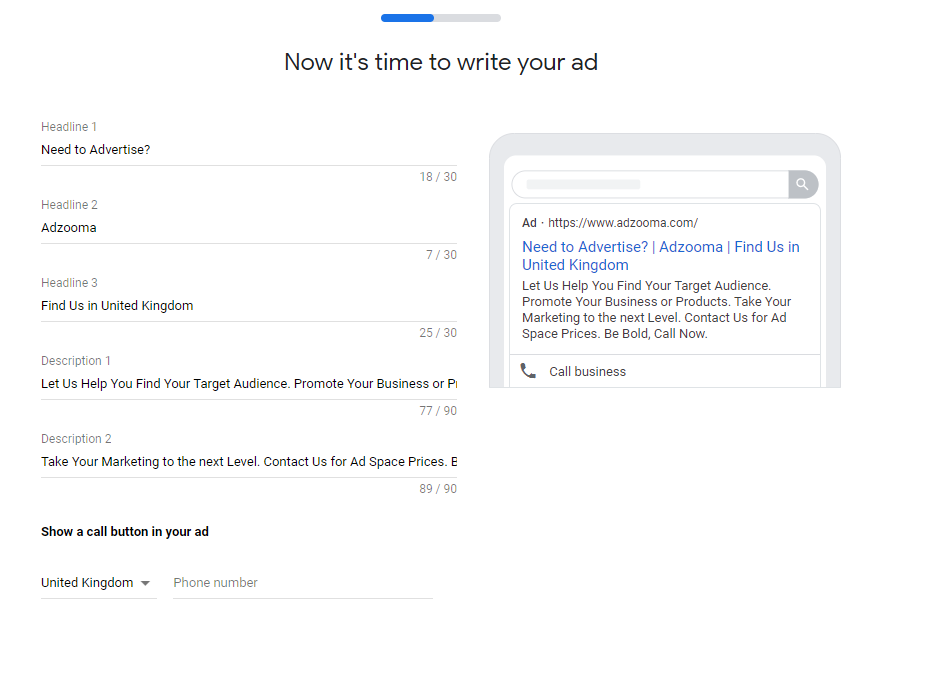
- Add keyword themes to group your ads together and ensure they reach the right audience.
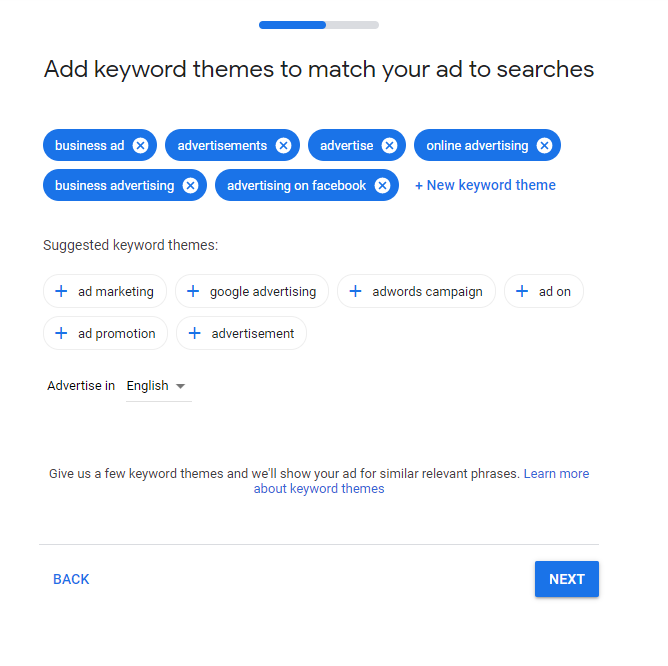
There are three keyword match types you can use which allow you to determine which searches you show up for:
- Broad match – When using broad match, your ad may show up on searches that include spelling mistakes, synonyms and close variations. For example, when bidding on ‘dog lead’, you may also appear for ‘dog walker’.
- Phrase match – When using phrase match, your ads will show on searches that match the appropriate phrase – so it could consist of other words before and after. If you were to bid on ‘dog food’ your ad may still appear for ‘cheap dog food’. Phrase match keywords need to be added between quotation marks for example, ‘dog food’.
- Exact match – Exact match types are very specific. Your ad will only appear for close variations with the same meaning or misspellings. Exact match keywords need to be added with brackets, for example: [dog food].
Read our keyword match types article for more information.
- Choose where to show your ad.
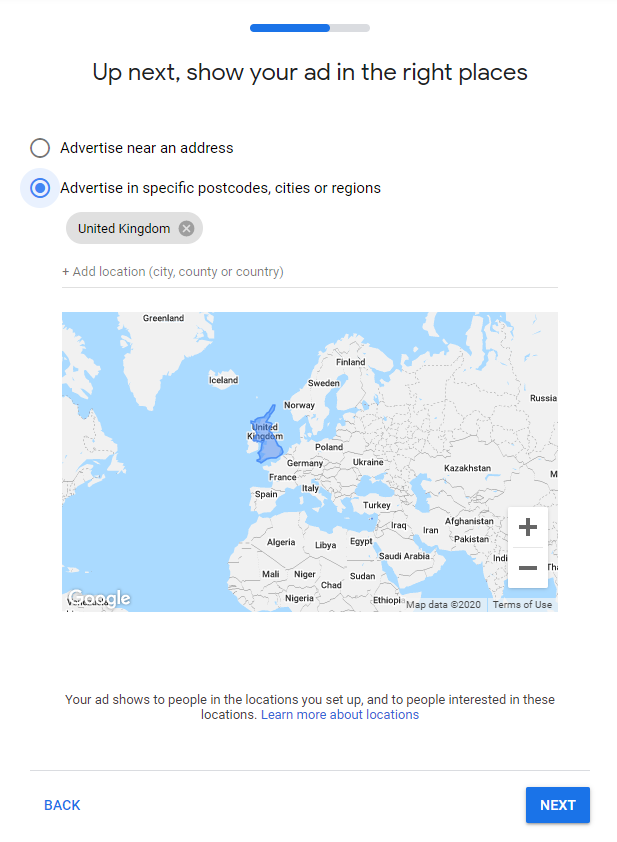
You can choose specific postcodes, cities or regions to show your ad. It is important to only choose locations where your business operates. If your settings are too broad you may end up paying for interactions with people who aren’t potential customers.
- Set your budget.
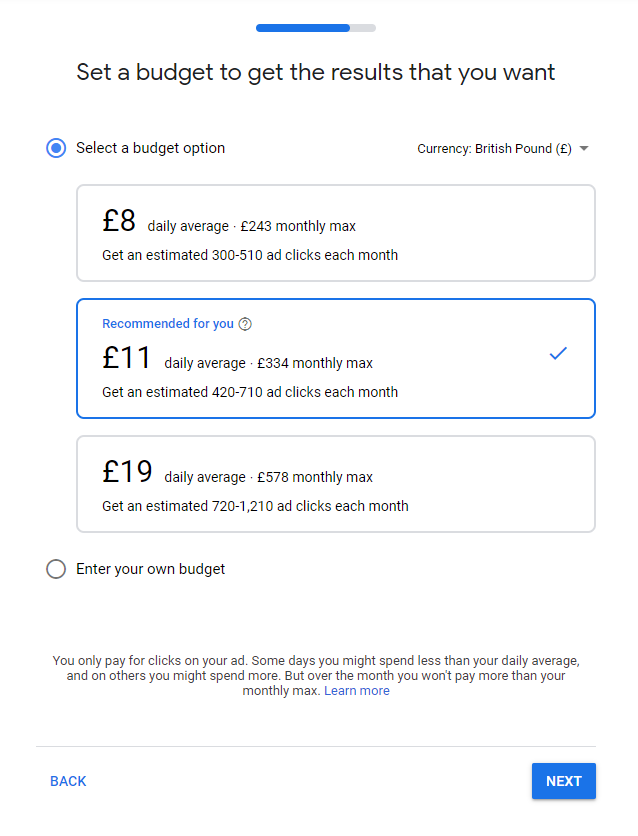
Google will give you three daily budget options, or if none of them are suitable for your business, you can determine your own budget. Some advantages include only paying for clicks, changing your budget and pausing your ads at any time.
Some days you might spend less than your average daily budget, but Google will make up for your spend on other days where there’s better potential. However, you will never go over your daily average budget.
If you’re unsure on what your budget should be, start small and then after you’ve collected some data, you’ll be able to make more informed decisions.
- Review your campaign.
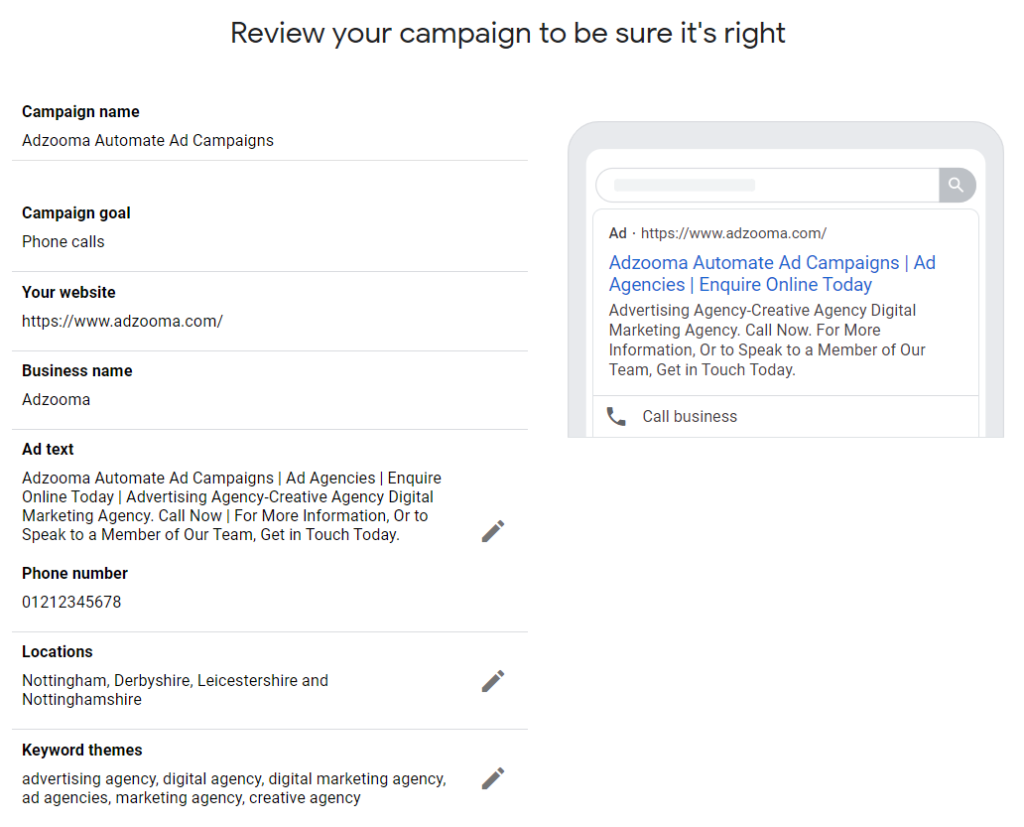
Double check your ads for grammar and spelling mistakes, ensure you’re targeting the right location and that you’re happy with them.
Step 12: Confirm your payment information.
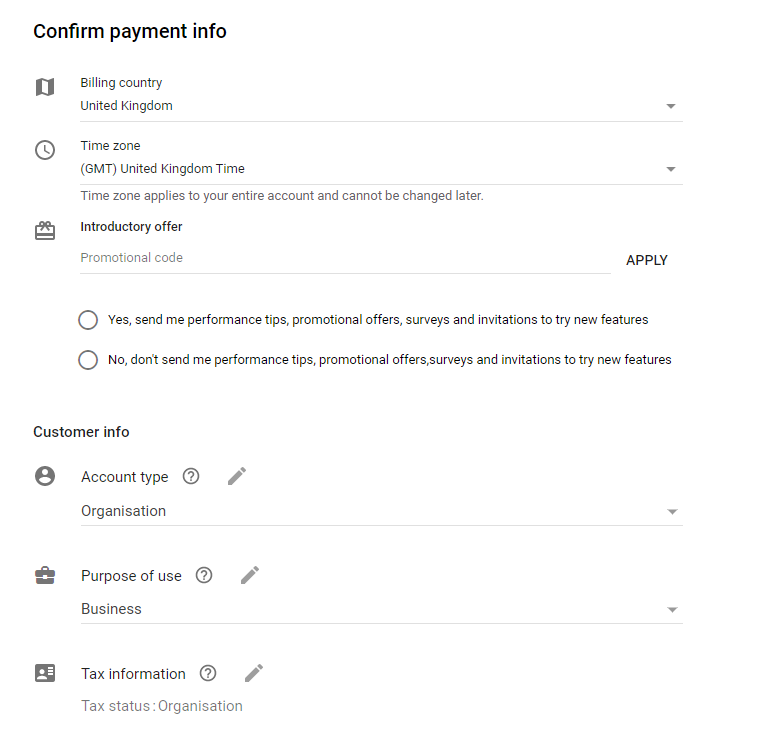
Now that you’ve successfully created your Google account and first campaign, all that’s left to do is to add your payment details.
3 Top tips to improve your campaigns
Here are three techniques to help you achieve the best results.
1. Create Ad Groups
It’s important to create ad groups which break your campaigns into specific categories. For example, if you sell a wide range of clothing products, it would be appropriate to split your campaign into ad groups such as ‘dresses’, ‘trousers’, ‘tops’ etc.
By focusing the ads and keywords within an ad group on one product, you can ensure that the keywords and ad copy are more relevant. This will make your ads more targeted which will increase your chances of getting more clicks.
There is no set amount of how many ad groups you can have in each campaign, however it is important to keep it manageable. For each ad group you create, we recommended that you create at least three ads that closely relate to the theme of your keywords – two text ads and one responsive search ad.
2. Optimise Your Campaigns
When your campaign is up and running, optimisation is the best way to improve its performance. You can do this by updating landing pages, changing your ad copy or by tweaking your keyword bids.
Optimising your campaigns daily can be rather time consuming, however by using Adzooma’s AI-driven opportunities based on your account data; you will save time, reduce wasted spend and boost your campaigns performance.
Opportunities are intelligent recommendations of how to improve your campaigns that you can apply with just one click.
3. Do Keyword Research
Keywords are one of the most important parts of your campaigns. They are what put your product in front of the customer, so it’s vital to ensure that they’re chosen effectively.
Choosing relevant keywords can sometimes be a challenge, but Google’s Keyword Planner will help you choose the right keywords to get your ad in front of potential customers.
It will pull together a list of relevant keywords that match your ads with the terms that people are searching for.
Make sure you build a negative keywords list too. This will help prevent you from getting low quality clicks, fewer leads and wasted spend. It will also ensure that you are maximising the effectiveness of your budget and your ads are only showing for suitable keyword searches.
Getting the most out of Google Ads
Here are a few key points remember when it comes to Google Ads:
- Choose the best ad type that suits your brand. You could use a hundred words to describe your new trainers but using shopping ads with a great image will always convey things a lot better.
- Choosing the right keywords for your campaigns is extremely important. They are what bring together your product with the perfect customer – use tools like Google’s Keyword Planner to find the best ones to use.
- Connect your Google Ads account with Adzooma’s free optimisation platform to be able to optimise your campaigns, hassle free.
If you are looking for other articles on Google Ads, here are a couple to start off with:
- A Guide to Google Ads Bidding Strategies
- Importance of Google Ads Structure
- What Is A Good CTR For Google Ads?
Advertising on Google isn’t the easiest thing to get your head around at first, but with practice and a little help from the free Adzooma Platform, it’s easy to get the hang of. You’ll soon see your clicks and conversions flooding in.

